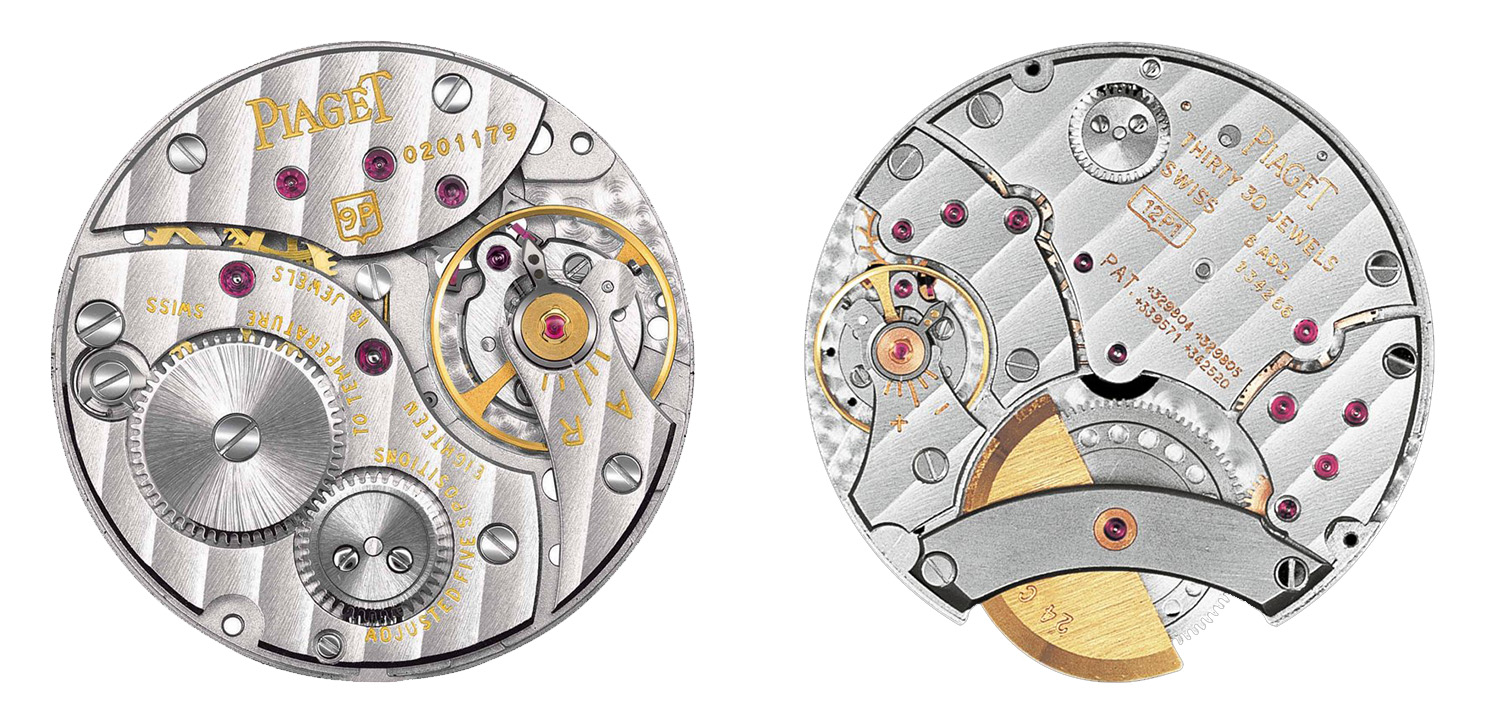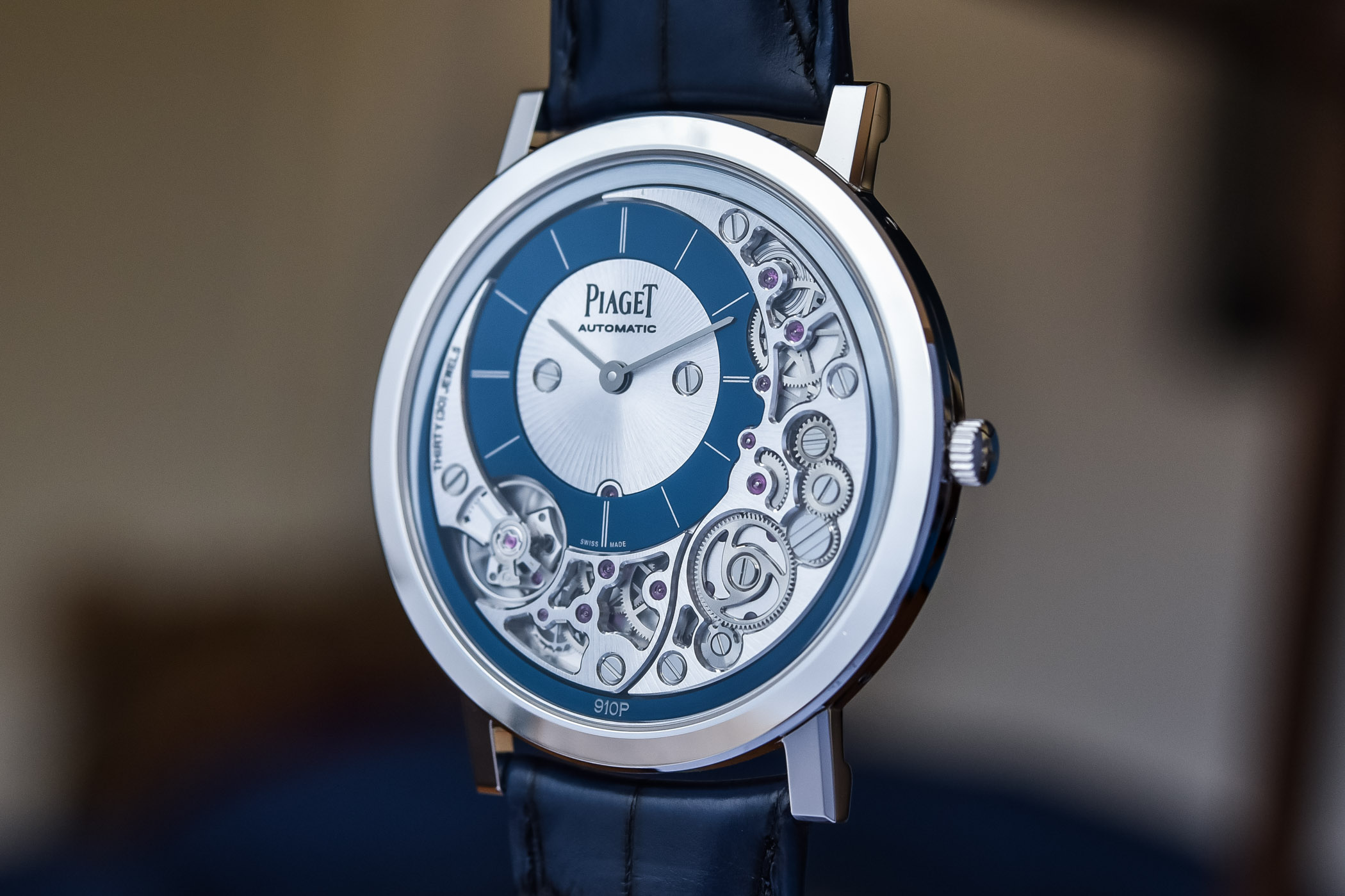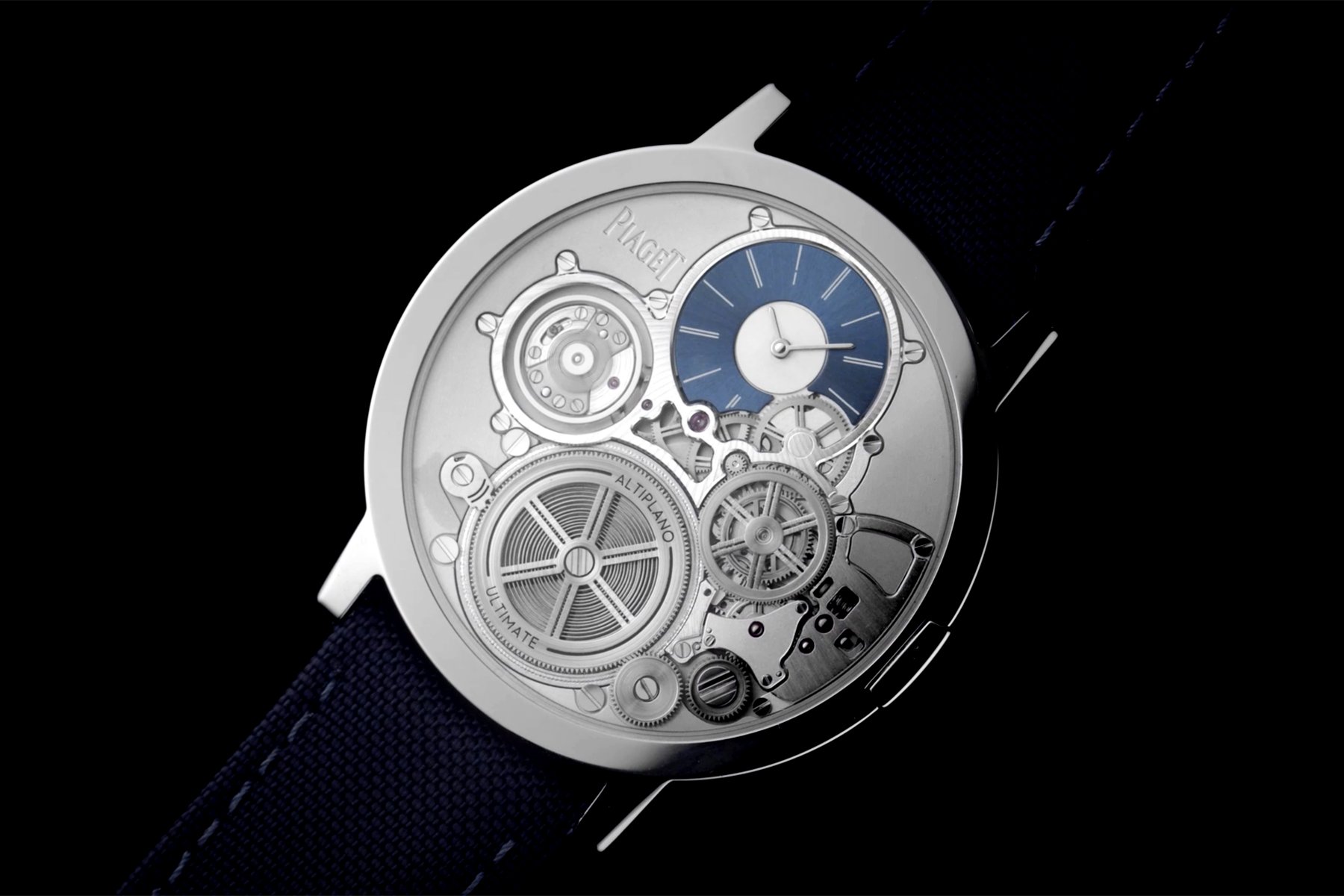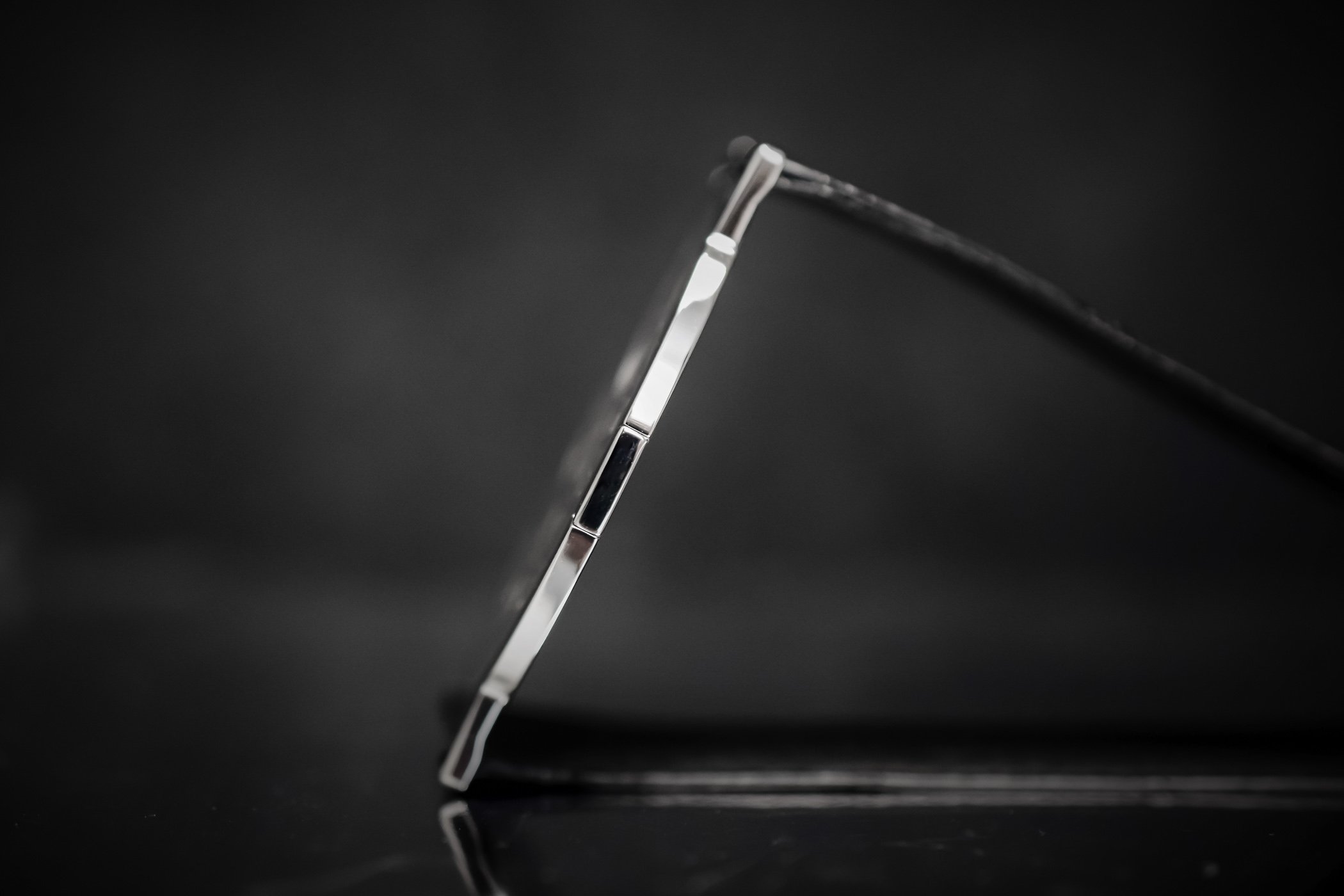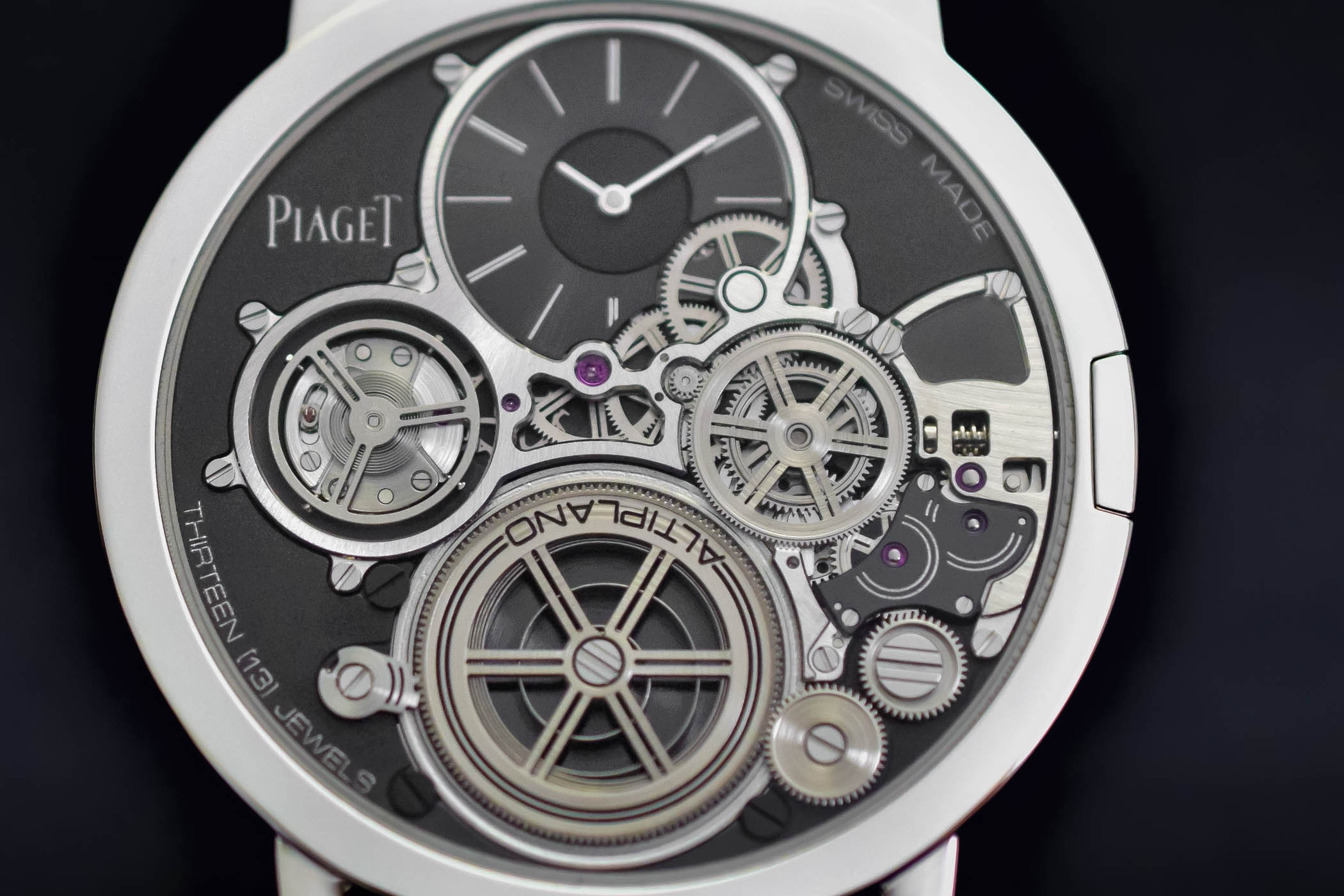Piaget, The Art of Ultra-Thin Watchmaking and Miniaturization
A closer look at Piaget’s archives reveals how ultra-thin has shaped the brand and why it has to be considered a true complication.
Piaget is world-famous for its vibrant creations in the field of watches and jewellery. In this video, we are taking a look at an important yet sometimes lesser-known side of the brand: its expertise in the field of movement creation and manufacturing. Everything started in the small village of La Côte-aux-Fées in the Swiss Jura mountains, where Georges Edouard Piaget set up his workshop in 1874. There, G.E. Piaget made a name for himself first focusing on escapements and then manufacturing parts and movements, even before crafting his own watches. Since then, Piaget has remained one of the few brands to design and manufacture movements in-house. Among countless calibres created and crafted by the brand, legendary extra-thin movements immediately come to mind. But Piaget also manufactured all types of complications and even quartz movements! If it would be hard to list every movement manufactured by Piaget, we are going to take a look at some of the brand’s milestones, including a few lesser known ones that really worth a mention…


The Origins, the art of ultra-thin and miniaturization
As you may imagine, this deep-rooted tradition and expertise in ultra-thin watchmaking did not come back out of the blue… Piaget specialized very early, from the early 20th century, in the art of miniaturization.
The calibres 9P and 12P
In 1945 Piaget moved to a new manufacture, the following years were a period of intense activity, with the creation of some of the best-known historical extra-thin Piaget calibres. The 5P was presented in 1946. In 1957, Valentin Piaget presented the calibre 9P, one of the slimmest mechanical movements at just 2mm. In 1960, the 2.3mm-thin automatic calibre 12P with its micro-rotor was then the thinnest automatic movement.
The Calibre 2P, 4P and 6P
The 1950s and 1960s were a truly rich period of creativity for the brand with many movements such as the calibre 2P, a miniature rectangular movement, and the calibres 4P and 6P with respective diameters of 4 and 6 lines, corresponding to 9mm and 13.5mm.
The Calibre 20P and 25P
The 20P and 25P are record-thin yet delicate movements made with Jean Lassale in the mid-1970s. The Piaget Calibre 20P, based on the Jean Lassale Calibre 1200, was a staggering 1.2mm think movement while the 25P, its automatic version was only 2.08mm in thickness. Way thinner than anything else created before, these calibres integrated several innovative concepts such as their architecture and the use of ball bearings. Several ideas have been at the base of modern, record-thin movements.
Interestingly the rights to manufacture these Lassale movements were later acquired by Lemania. Lemania was taken over by Piaget in 1981 before being sold to Investcorp in the early 1990s and integrated into Breguet and the Swatch Group.
The Quartz Era
During the 1970s, the popularity of the new, accurate quartz watches plunged the Swiss mechanical watch industry into a deep crisis. Indeed, quartz watches were a technological breakthrough, allowing watchmakers to produce timepieces that were cheaper and more accurate than anything else before. Piaget has several milestones in the field. It was one of the pioneers of this new technology, being part of a consortium of Swiss brands that created the first prototype quartz wristwatch in 1966, the Beta 21 movement. For example, the cushion-shaped Piaget watch worn by Andy Warhol during the 1970s was created around an evolution of this movement, becoming the Beta 22.
But there are other interesting and original developments in the field such as the ultra-thin 7P in 1976, powering the first Polo watches. Presented in the early 1990s, the 212P is an original high-end chronograph perpetual calendar quartz movement. There’s also the 570P and 700P that were presented about 10 years ago, which were exotic, hybrid, mostly mechanical movements whose production remained quite limited. It had no battery and it was wound by a rotor… but it was regulated by a quartz oscillator.
The Renaissance of Ultra-Thin Mechanical Watchmaking
With the renaissance of mechanical watchmaking in the 1980s and 1990s, Piaget pursued its tradition of crafting mechanical movements. A large portfolio of movements and complications has been developed, including some of the most sophisticated functions – including tourbillons and minute repeaters.
But there again, ultra-thin deserves a special mention… Replacing the 9P, the 2.1mm thin 430P (and the 500P in automatic version) was the first modern movement to perpetuate Piaget’s tradition of crafting elegant dress watches. Worthy of a mention too are the extra-thin 1200P micro-rotor calibre presented in 2010 and the 1270P with micro-rotor Tourbillon, both released in splendid skeletonized and stone-set versions.
The Grail of Ultra-Thin at Piaget, the Calibre 900P, 910P and the Record-Thin Altiplano Ultimate Concept
Presented in 2014, the Calibre 900P – and later its automatic version with a peripheral rotor, the 910P – marked an important step with its ingenious construction, with a fusion of the main plate and the caseback. This allowed Piaget to present Altiplano watches as thin as 3.65mm.
Still, the jewel on the crown of Piaget’s ultra-thin movements is undoubtedly the Altiplano Ultimate Concept. At a mere 2mm, it was the thinnest mechanical watch ever as it was unveiled in 2018. Inspired by the 900P, the radical reengineering of the architecture of a watch, its absolute slenderness has been achieved by fusing the movement’s main plate, the case and the bezel into one single component. Several wheels are rotating on ball bearings eliminating the need for bridges. The same goes for the balance. It is cantilevered and pivots directly on the caseback on ball bearings. It will be hard to list all details that made this achievement possible but no fewer than 5 patents were filed in the course of its development.
Movement manufacturing and the art of ultra-thin are a long tradition at Piaget. The brand has even been a maker for other brands such as Omega or Cartier over the years. Most importantly, this expertise in miniaturization allowed Piaget to create a unique expertise, with on one hand pared-down ultra-thin watches and, on the other hand, fascinating creativity with expressive designs and colours. And in this period of fierce competition in the field of ultra-thin watchmaking, we are looking forward to seeing what the brand might present next. Let’s meet in a few days at Watches and Wonders. We might be surprised once more.
For more details, please visit piaget.com.



